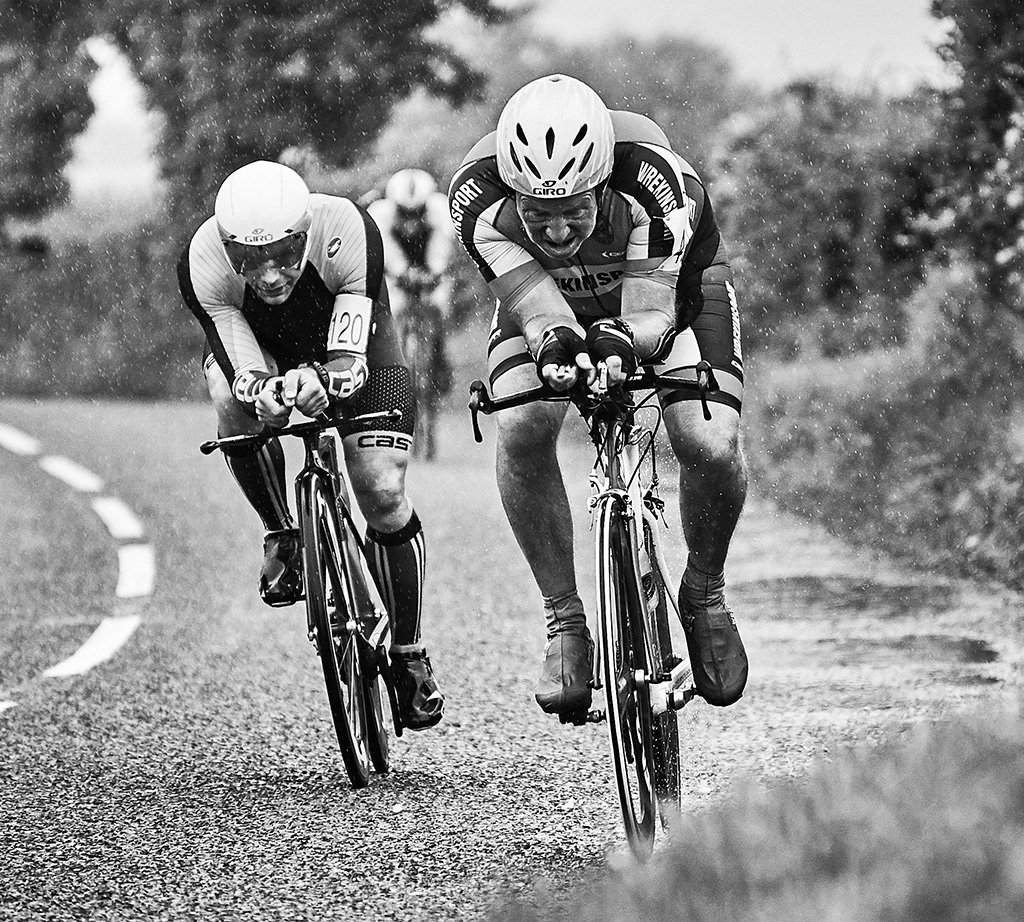By Richard Bideau.
I am often asked for advice on how to prepare for the 100. Here are some suggestions based on my own experience.
100 miles! There is a certain grandeur about the distance. Mention it and people react. It sounds so hard. For the rider, there is a greater apprehension about competing than with the shorter distances. Vividly I remember my feeling of dread, no exaggeration, as I waited for the count to reach zero on the day of my first. That was Stockton in 2015. I did most things right that day, but there is no denying it was hard, perhaps the hardest time trial I’d ridden. That day ended in a totally unexpected way with me breaking the competition record with 3:18:54 and becoming the first rider to break the magical 30mph threshold for 100 miles. Several months later the course was found to be short, maybe 99.9 miles and the record didn’t stand.
Preparation
I’ll assume experience with distances up to 50miles and a good level of fitness. This is what worked for me, though it might not suit everyone. Getting used to delivering power in the time trial position for long periods is important. Longer rides of 4-6 hours, mostly in the time trial position, were the staple of my preparation. I didn’t attempt to match the sort of power output I was expecting to achieve in the actual event, and I don’t think it would be a good idea at all. Rather than lead to better training, I expect it would lead to burnout, exhaustion and disillusionment, though maybe there are some hardy souls out there who would thrive on it.
Fasted rides seemed also to help, maybe by improving the ability to burn fat and therefore preserve precious glycogen reserves during extended efforts. I would often set off early on a Saturday morning, head out to the Yorkshire Dales and end up at Airton Cafe for a coffee, and, if the distance at Airton exceeded 75 miles (guaranteeing over 100 miles by the time I was home) I would allow myself a cake as well.
Nutrition and Hydration
100 miles is first of the fixed distances where it is essential to have a drink in pretty much any foreseeable conditions. Some riders will also need food, but consuming solid food while riding in the TT position is extremely difficult. I prefer to add carbohydrate powder to my drink. The amount is important as the body’s ability to process carbohydrate during a time trial is limited, and there is no point in adding more than can be dealt with. Around 200g of maltose/fructose powder is about right. This gives around 350kcal of energy, by no means enough to fuel the ride, but enough, it is to be hoped, to make the difference between the finish and the bonk. The amount of water needed will vary a lot with conditions and from rider to rider. I have always started with around 2 litres and I don’t recall ever having used it all.
Carrying the water is an important detail! Frame mounted round bottles cause a lot of drag and are not an option if the goal is the fastest possible time. Aero frame bottles are available but generally have limited capacity and can be fiddly to access. Two good locations for bottles are between the pads on the basebar and behind the saddle.
A better option for some riders and the one I have always used, is to carry the water in a ‘camelbak’ type of bladder. I wear a modified base layer with a pouch on the front to hold it. It does feel rather odd at first and some riders with very constrained positions will find it impossible to accommodate. The other option is to carry it in the conventional way on the back, I’ve seen some riders doing it that way.
A completely different approach is to use a feed station or a helper to hand up food and water. Some organisers have a service where the rider provides labelled drink bottles to be handed out at designated feed stations. There is usually a spotter ahead of the station who relays the numbers of the approaching riders so that there is minimal delay.
Numbers
In addition to the usual race number, many 100s require the rider to have forward facing numbers on one or both arms. This is to help the timekeepers on lap based courses and also to help with the spotting of riders approaching the feed station.
Pins can be used to mount the arm numbers but a better method for lower drag is to use a pouch with a transparent window, several brands are available.
Race Day
A 100 is nothing like a 50! That is my experience.
Good pacing and avoidance of negative thoughts are two essential requirements. Aiming to ride at constant effort is a good starting point, at all costs it is essential not to set off too hard. The advice sometimes given is to ‘ride the first half like a 50 and then hang on’. This is almost guarantees failure. The power should always be lower than that in a 50. For those with powermeters my advice is to target a power of 80% FTP, or alternatively 90% of the power that has been used successfully in a 50.
A good mental attitude is essential. At all costs avoid thinking about the distance still to go. In my first, I concentrated only on the short term: completing one more mile, trying not to think any farther ahead than that.
Extreme discomfort can be a big problem as the distance mounts. Numb feet and hands, saddle chaffing, aching arms and neck problems are common. One way to reduce these problems is to get into a routine of periodically adjusting position slightly. Every 5 miles, I have a sequence of wiggling my toes, fingers, and moving around in the saddle a little. It seems to help with discomfort and it also seems to help with positive thinking: having something as a distraction.
I generally find that the worst part occurs somewhere between 70 and 90 miles. By this distance, is should be feeling extremely hard and the big danger is to think about the distance remaining and be tempted to give in. I find that even at 90 miles, it is easy to feel despair: although 90 miles are gone, there is still 10 to go. A full 10! That is a time trial in itself. Winning the mental battle at this point is, in my opinion, the key to a successful 100.

